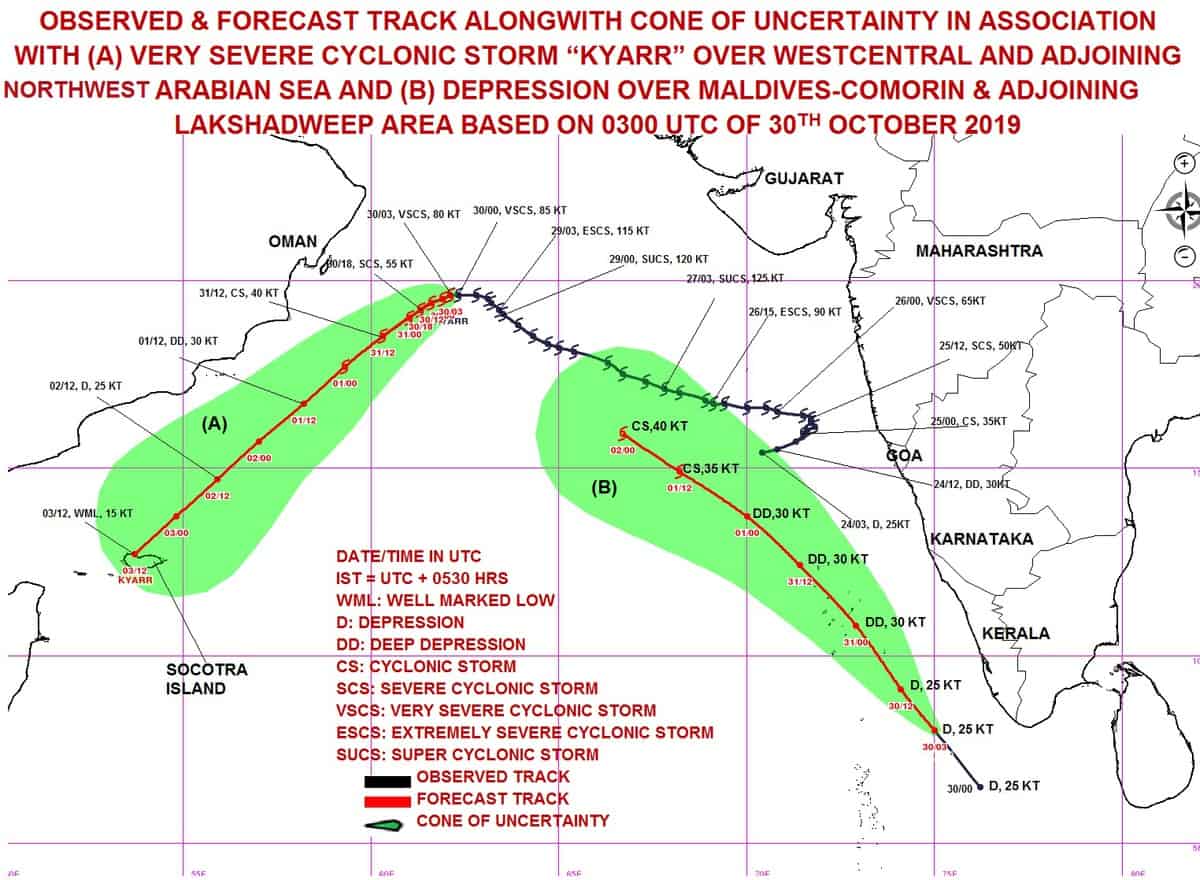Ocean shipping along the coast of Oman, in the Middle East and throughout the Arabian Sea, is being disrupted by Cyclone Kyarr – the most powerful storm ever in that sea-space. However, local sources advise that shipping through a globally critical oil chokepoint, the Strait of Hormuz, is unaffected.
A near-miss and rapid intensification
It has been a near-miss for the countries of India and especially for Oman (in the south east of the Arabian Peninsula) as a ferociously strong tropical storm, Cyclone Kyarr, is predicted to stay offshore. Kyarr formed as a depression last Thursday. It began to travel north east toward the Indian south west coast. But, a day or so after formation, it veered away before landfall and began travelling in a northwesterly direction.
During the weekend the storm strengthened so much, and so quickly, that the Indian Meteorological Department was forced to repeatedly upgrade the classification of the storm. First, it was upgraded to cyclone status, then to a “severe” cyclone, then to a “very severe” cyclone, then to an “extremely severe cyclone” and finally, up to a “super cyclone”.
Maximum sustained winds
As a super cyclone yesterday, Kyarr had maximum sustained winds of 95 knots (109 miles per hour) and gusts up to 120 knots (120.8 miles per hour) over a radius of 30 kilometers (18.6 miles). However, the system has weakened overnight back into an extremely severe cyclone.
The system has been slowly moving north west toward Oman and in the general direction of the Strait of Hormuz, a vital waterway for the transit of global oil supplies. According to the U.S. Energy Information Administration, the daily flow of oil through Hormuz last year averaged 21 million barrels per day. That’s about 21% of global petroleum liquids consumption, the EIA said.
Forecast path
Although Kyarr has been moving toward Hormuz, both the Indian and Omani weather forecasters predict that Kyarr will shortly curve away toward the south west and will not make contact with land on the Omani coast.
Prior to the advent of Kyarr, the strongest-ever storm in the Arabian Sea was Super Cyclone Gonu, which made landfall in Oman in June 2007, causing many deaths and billions of dollars of property damage.

Local observations
FreightWaves spoke to two ship agents in the region. Shipping operations at ports along the coast of Oman, which includes several important container trans-shipment ports along with oil and gas facilities, are reported to be closed owing to heavy swell of between four to six meters (13 to 19.7 feet) wind and rain.
Shipping operations on the western side of the United Arab Emirates, which contains the regionally important port of Jebel Ali, are unaffected, local ship agents say. Meanwhile, shipping operations through the Strait of Hormuz, the waterway separating Iran from Oman and the UAE and which is only 33.5 miles wide at its narrowest point, is also unaffected.
FreightWaves understands that the eastern coast of the UAE and Oman are being subjected to heavy rain. There are reports of widespread landside flooding and potential inundation from the sea even though the center of Cyclone Kyarr is still far out to sea and will likely not approach closer to land than 200km (124.3 miles).







